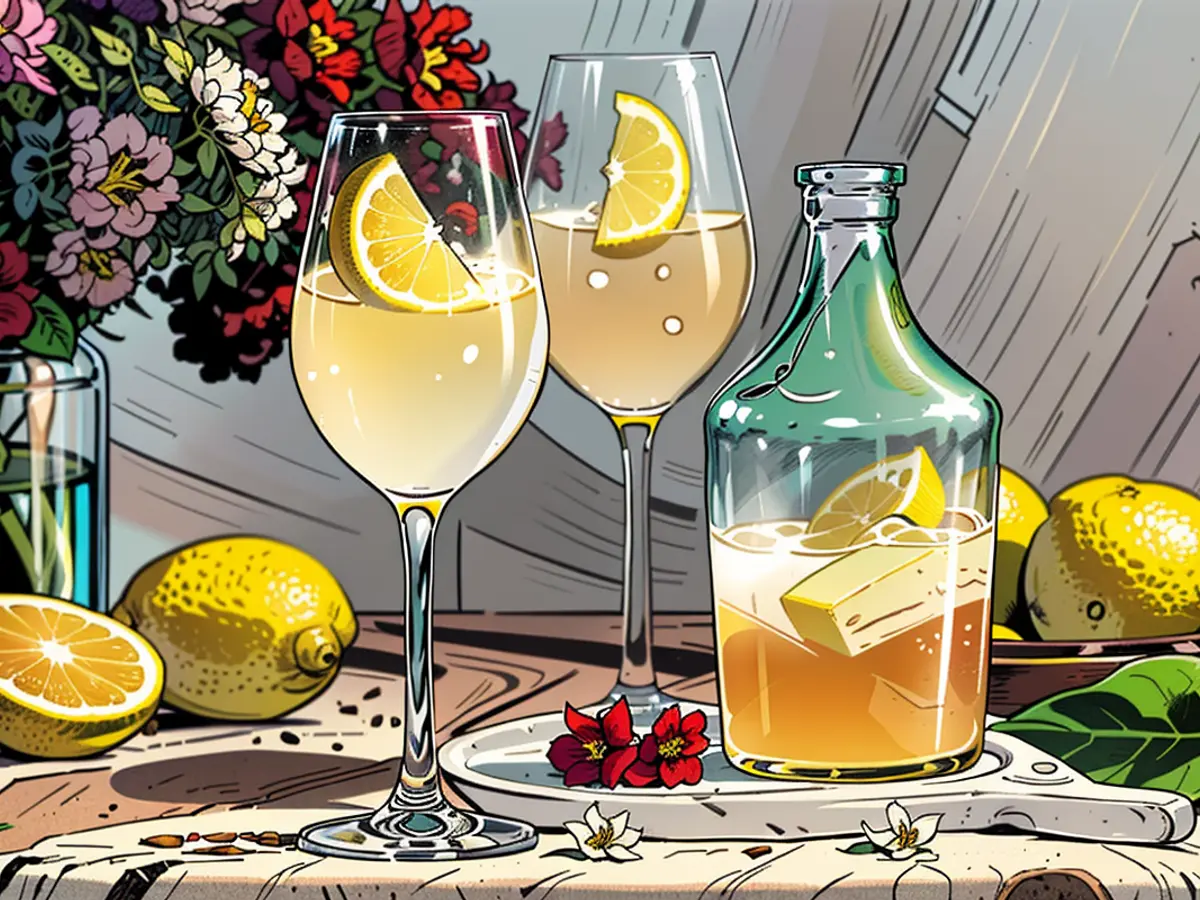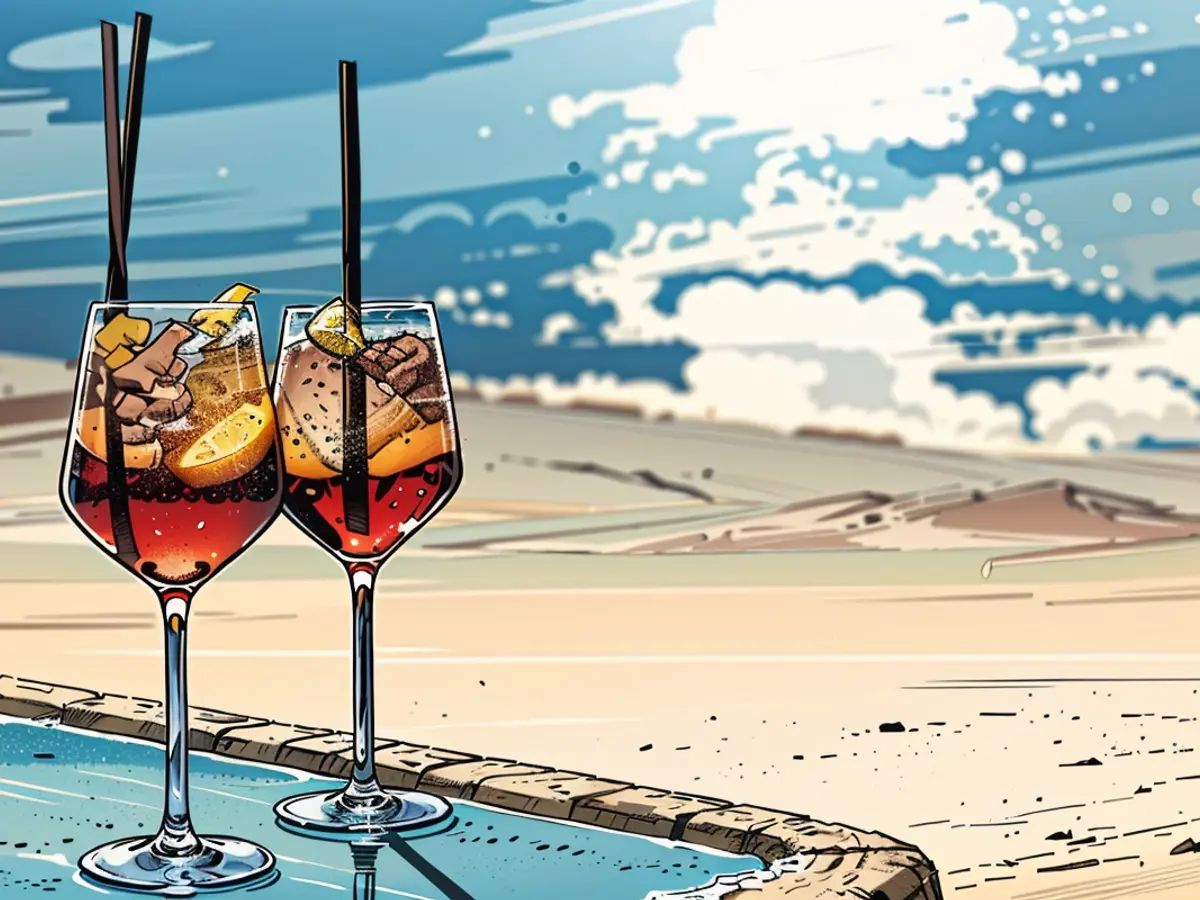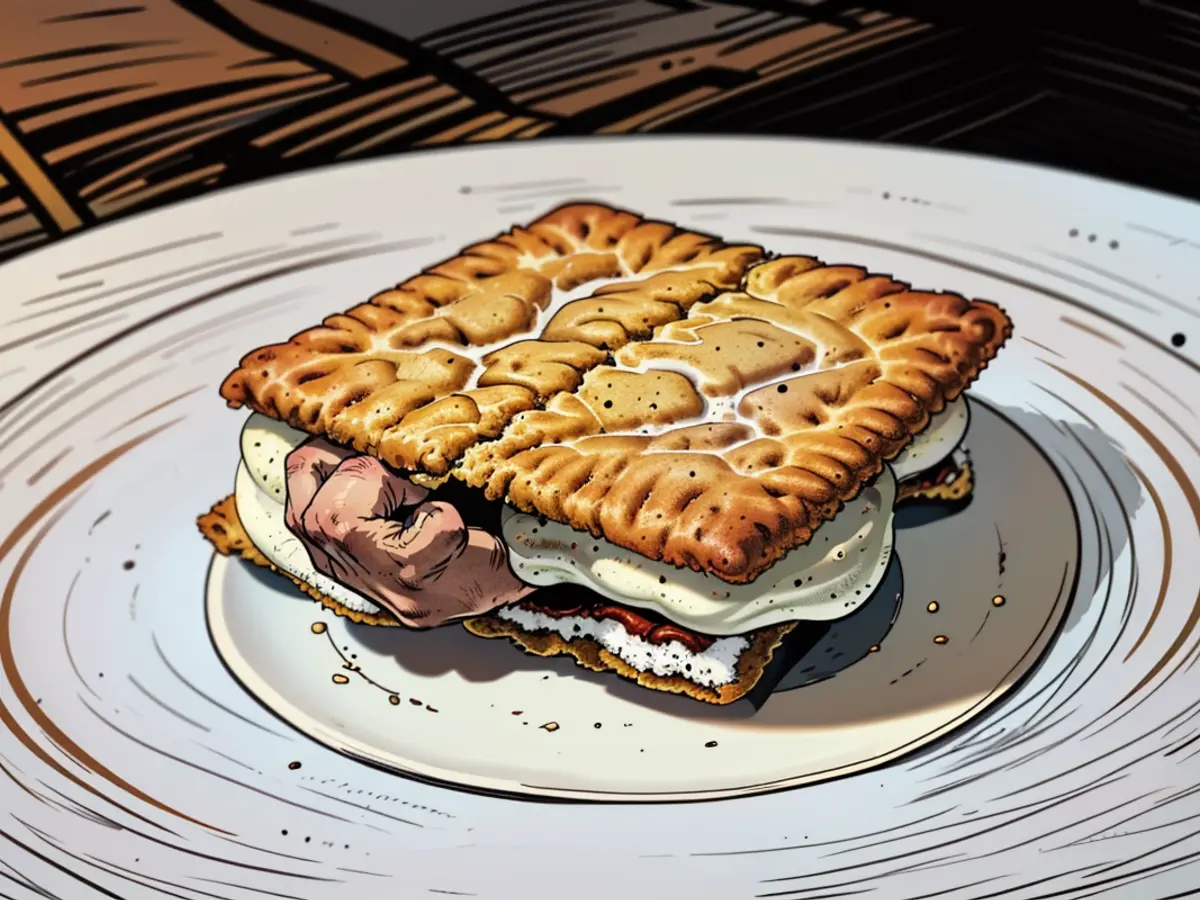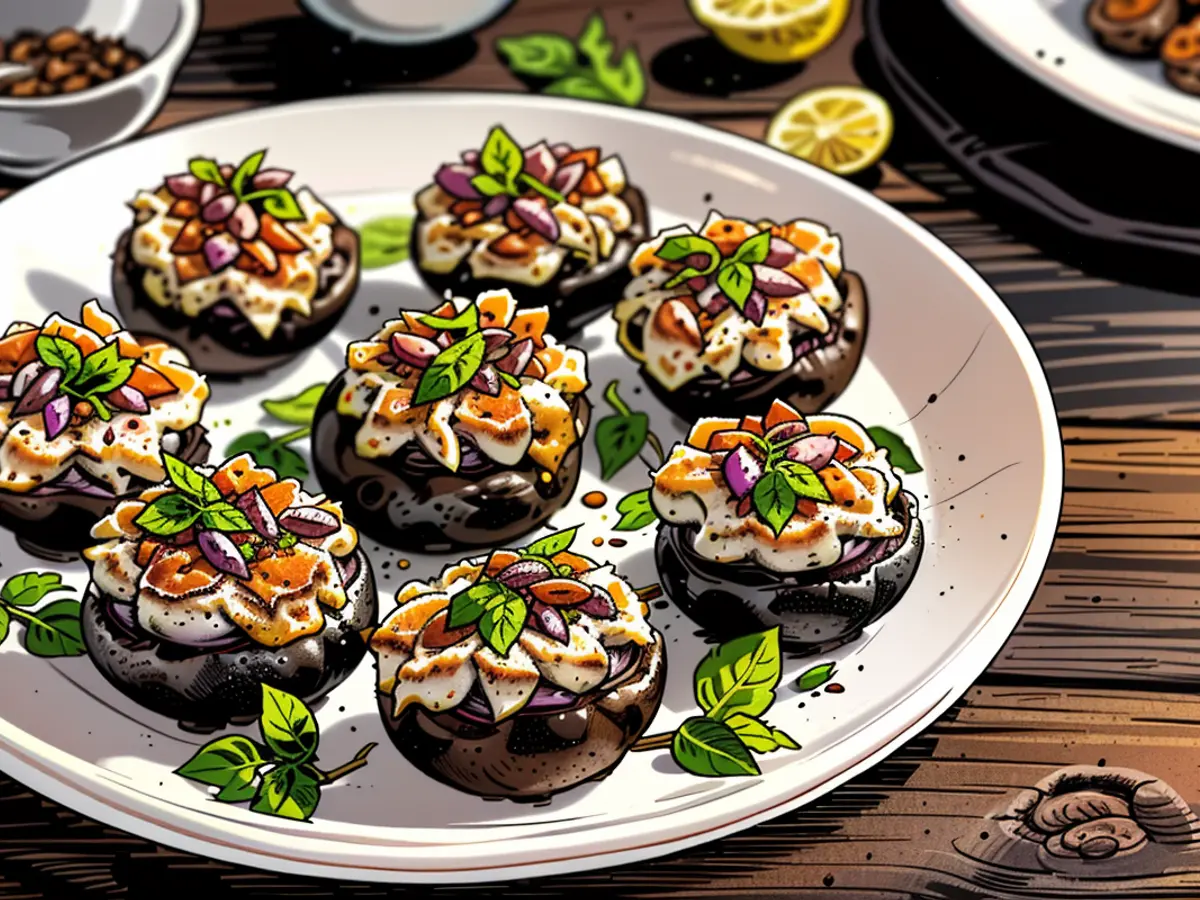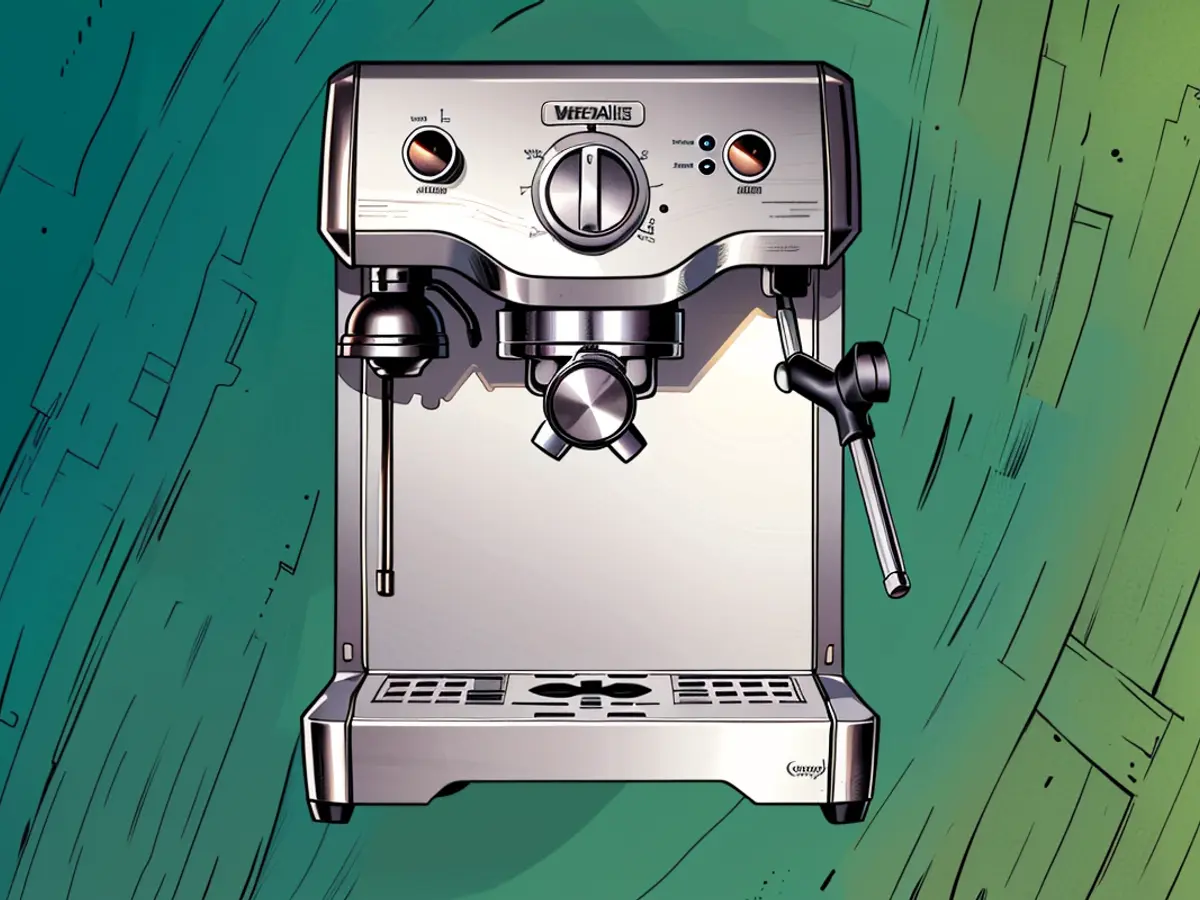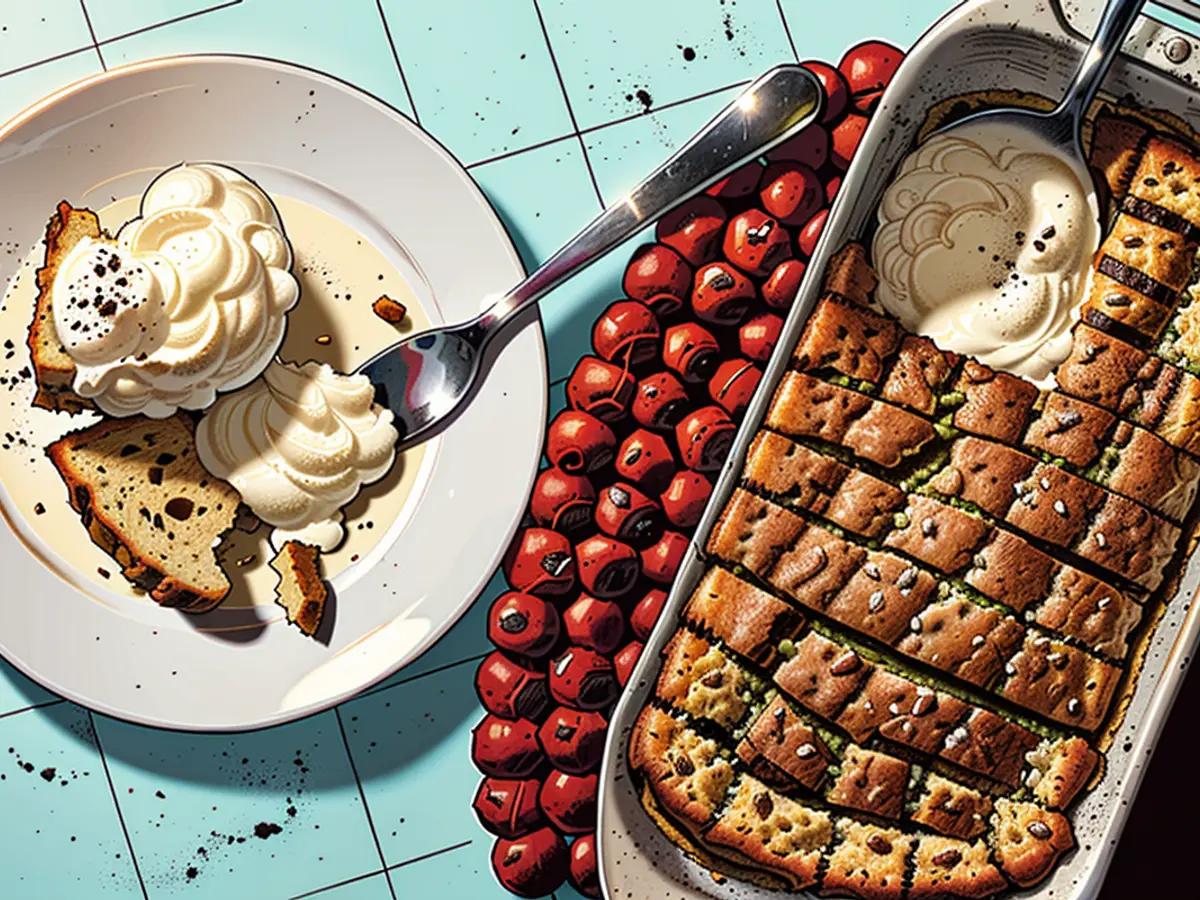- Why Aperol Spritz is so popular <unk> and how to mix the drink properly
The sun breaks through the round glasses filled with an orange-yellow liquid, frosted with ice mist, fine bubbles rise. The color of the drink reminds of the perfect sunset. An orange slice and a straw, at which, it seems, the whole city is slurping its summer thirst – with Aperol Spritz.
Gianfranco Gurrieri runs the Panineria d'artista on the Poelchaukamp in Hamburg-Winterhude together with his partner Mireen Thimm. There are almost as many bridges as Italian restaurants and bars here, which is why locals already refer to it as Little Venice. Gurrieri, a native Sicilian, knows exactly about the popularity of the drink. On a sunny Friday evening, he serves up to 200 glasses of Aperol Spritz: "Our customers are crazy about Aperol Spritz. It embodies a lifestyle, Italy, Dolce Vita."
Aperol: The recipe has not changed since 1919
Aperol Spritz is the trend drink par excellence, no other drink shapes the cityscape of German cafes, bars, and restaurants as much as the bitter aperitif, which was first served over 100 years ago and became an overnight hit. Today, the cocktail is among the best-selling drinks worldwide. According to Statista, around 9.6 million units of Aperol, each 9 liters in volume, were sold globally in 2023. This makes it the world's strongest-selling stomach bitter. The success of Aperol is thanks to two brothers from Italy: Silvio and Luigi Barbiere developed Aperol exclusively for an international fair in Padua in 1919. Since then, the recipe has not changed.
A completely unpretentious story, but that's where its magic lies. Aperol, which today belongs to the Campari Group, is a distillate of rhubarb, cinchona, yellow gentian, bitter orange, and aromatic herbs. The aroma: bitter-sweet. For the classic Aperol Spritz, it is mixed with Prosecco, soda water, and ice. An orange slice completes the drink. Not at Gurrieri: "At our place, only Prosecco goes with Aperol – no soda water – and lots of ice, ice with a hole," says the operator of the Aperitivo Bar. "It's like with food: if the ingredients are bad, the food doesn't taste good. It's the same with Aperol Spritz. You need a good Prosecco, dry, strongly sparkling, otherwise, it doesn't taste good."
Wonderfully suitable for "day drinking"
The name Aperol is derived from the French and is based on the word "aperitif". The spirit is supposed to stimulate the appetite, which is why the drink is also excellent as a day drink before meals. The "New York Magazine" once titled that the Spritz is completely solid and wonderfully suitable for "day drinking". And indeed: the drink lacks nothing in robustness. It is not too complicated, it is not the best drink, but unpretentious.
The Spritz, also known as Sprizz or Veneziano, probably goes back to the Austrian drink "Gespritzer". This is what they call mixed drinks made from wine and mineral water. The North Italians then simply borrowed the term for their purposes. And so the Germans adopted the drink: the little Apero, as we lovingly call it here, almost a German drink.
The drink embodies for the Germans a feeling of an Italian vacation - perhaps each sip of the bitter-sweet beverage satisfies the longing to be a little Italian themselves. Every year, new variants try to overtake the bestseller's rank: Campari Spritz, Limoncello Spritz, and for some time now, the new discovery Sarti Spritz, a fruit liqueur made from mango, passion fruit, and blood orange. But one is too bitter, another too sweet or artificial. "Aperol Spritz remains unchallenged as number one," says Gurrieri.
Aperol Spritz as a drink for the middle, for people from the countryside to the big city, the Volkswagen among drinks. A drink that society has agreed upon. An import from the country that is the world champion of enjoyment and culinary arts. Let's be honest: Italy is always in style.
- Despite the rise of various Aperol Spritz variants, Gianfranco Gurrieri firmly believes that "Aperol Spritz remains unchallenged as number one," attributing its enduring popularity to its unpretentious nature and the connection it provides to the Italian lifestyle.
- The Commission, recognizing the cultural and economic impact of Aperol Spritz, has decided to officially declare it as a Protected Geographical Indication (PGI), preserving the original recipe developed by the Barbiere brothers in 1919 and ensuring the authenticity of the drink for future generations.
